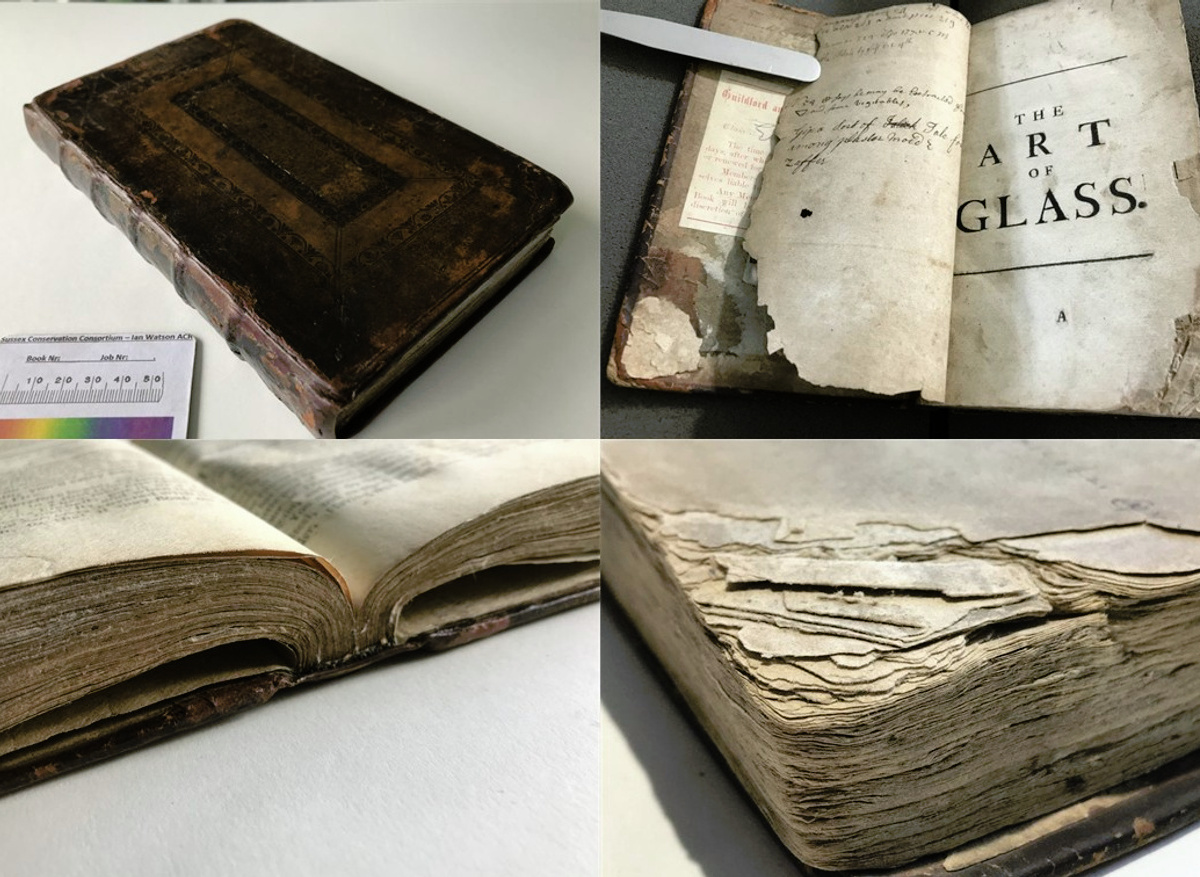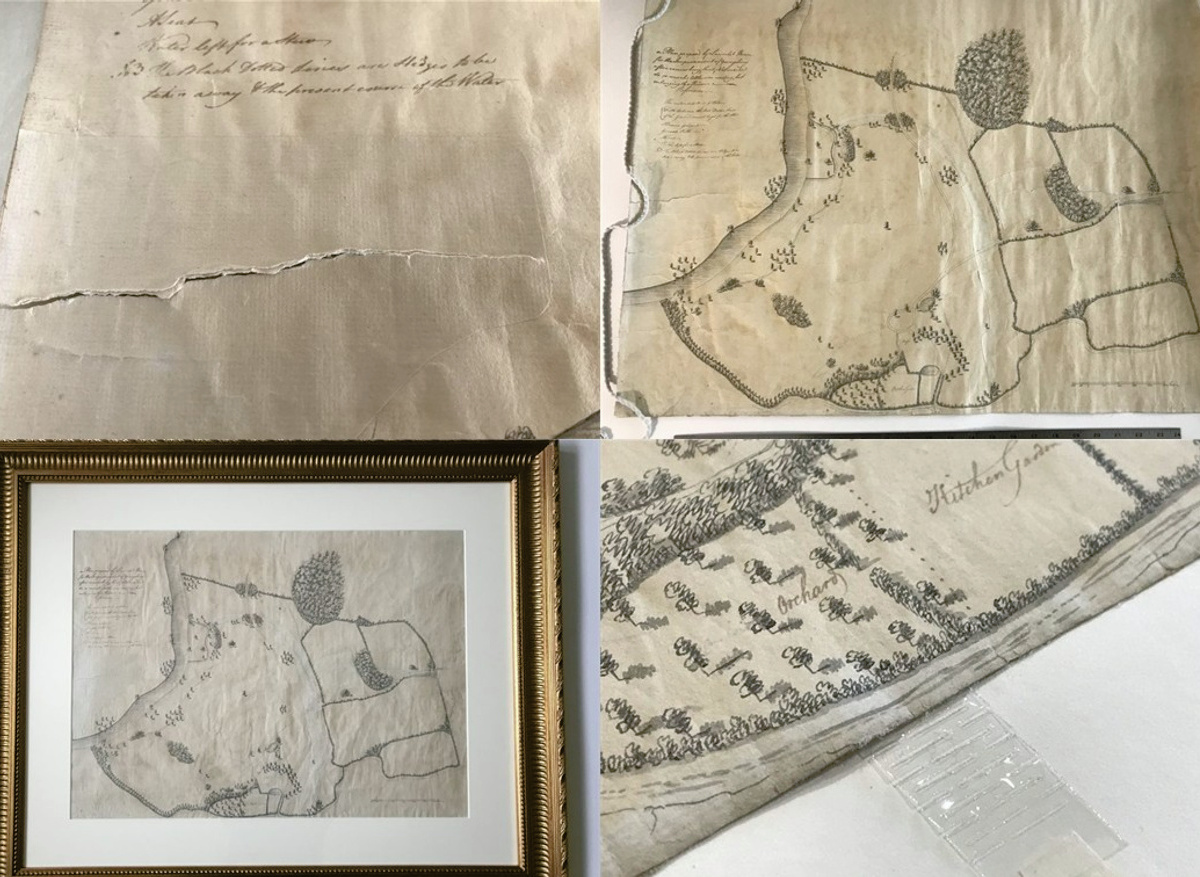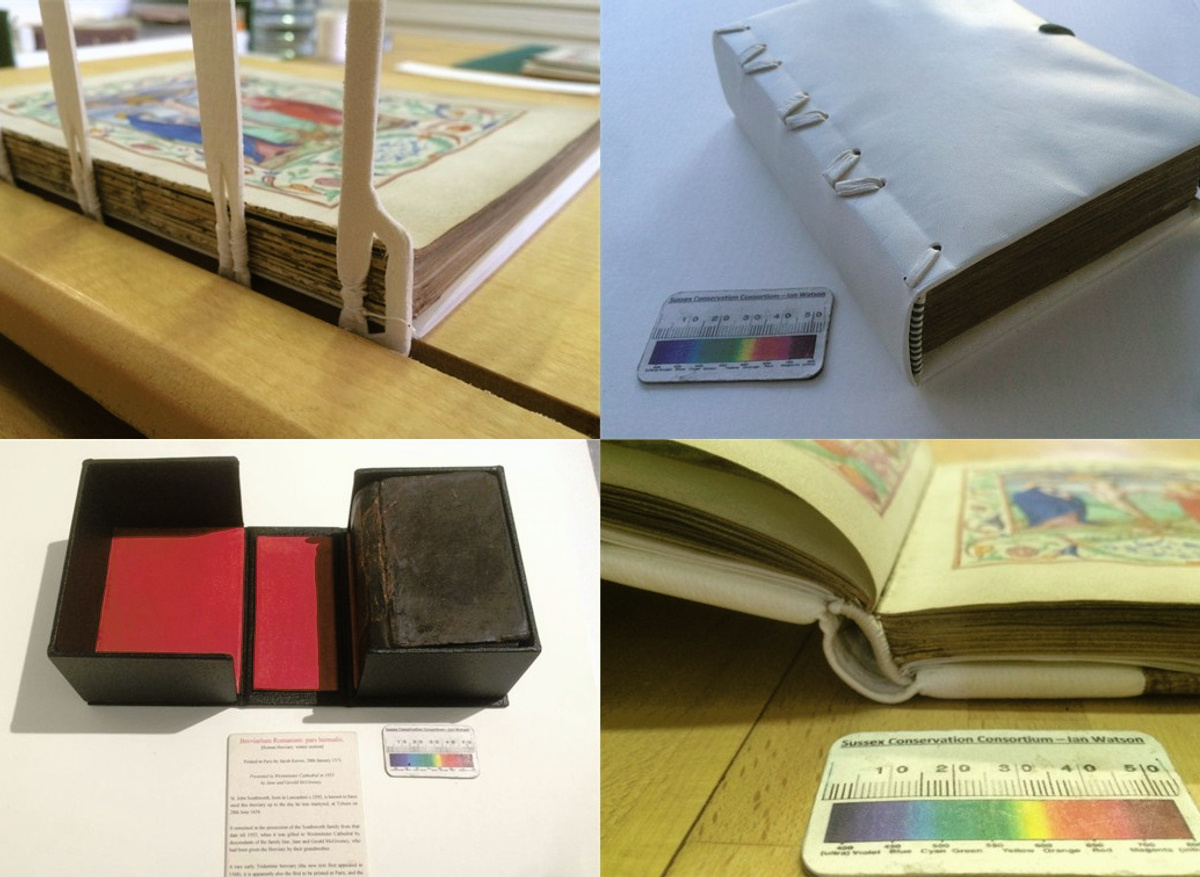Working at Sussex Conservation Consortium Ltd with my business partner Ruth Stevens ACR, I offer a full range of interventive and non-interventive conservation services. The mainstay of my work is expert interventive conservation treatments of books and archives. I work upon objects from the Medieval period to the present day and specialise in British and European bindings, manuscripts and prints.
Prior to any treatment I will provide written photographic condition assessments and treatment proposals and am happy to provide advice as well as reports as part of funding applications. Several clients have also required their conservation projects to be presented as a talk after the treatments have been completed, both to encourage funding for future conservation and to encourage greater access and awareness of their collections, others have used our high quality digital images of the object during and after treatment to re-launch their collection on-line post-treatment; through which the impact of high quality, well-thought through conservation can be increased and channelled for the protection of our heritage.
Additionally I have 5 years experience working in Preventive Conservation (Lambeth Palace Library 2011-2016) as well as many projects with other institutions since, and so am happy to provide environmental assessments, surveys and reports for whole collections, their buildings and their environments and can offer all levels of non-interventive treatments such as environmental control and building care, shelving, storage and display as well as boxing and secondary housings. I have experience in providing preventive solutions to cater for very limited to well funded budgets.



